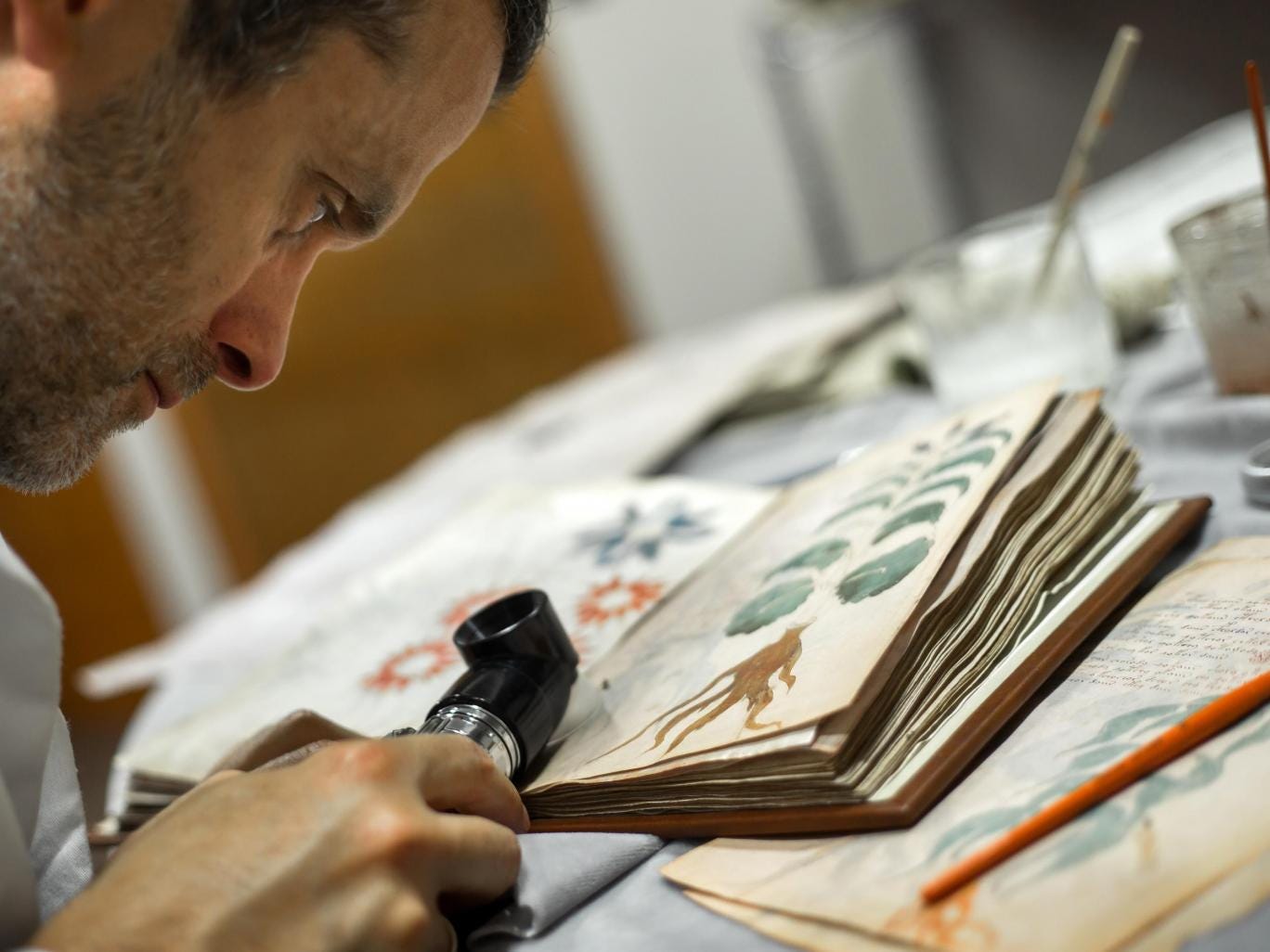
By Josh Gabbatiss Science Correspondent for Independent
Artificial intelligence has allowed scientists to make significant progress in cracking a mysterious ancient text, the meaning of which has eluded scholars for centuries.
Dated to the 15th century, the Voynich manuscript is a hand-written text in an unknown script, accompanied by pictures of plants, astronomical observations and nude figures.
Since its discovery in the 19th century, many historians and cryptographers have attempted to unravel its meaning – including code breakers during the Second World War – but none have been successful.
While some have written the Voynich manuscript off as a hoax, use of modern techniques has previously suggested the presence of “a genuine message” inside the book.
Now, computer scientists at the University of Alberta have applied artificial intelligence to the text, with their first goal to establish its language of origin.
They used text from the Universal Declaration of Human Rights in 380 languages to “train” their system and then ran their algorithms, which determined the most likely language for the document was Hebrew.
“That was surprising,” said Professor Greg Kondrak, who led the research.
“And just saying ‘this is Hebrew’ is the first step. The next step is how do we decipher it.”
The scientists set out to employ an algorithm that could decipher the scrambled text that makes up the manuscript.
They hypothesised the manuscript was created using alphagrams, or alphabetically ordered anagrams. This theory has previously been suggested by other Voynich scholars.
By applying algorithms designed to decode such puzzles, Professor Kondrak and his graduate student Bradley Hauer were able to decipher a relatively high number of words using Hebrew as their reference language.
“It turned out that over 80 percent of the words were in a Hebrew dictionary, but we didn’t know if they made sense
While they noted that none of their results, using any reference language, resulted in text they could describe as “correct”, the Hebrew output was most successful.
The scientists approached fellow computer scientist and native Hebrew speaker Professor Moshe Koppel with samples of deciphered text.
Taking the first line as an example, Professor Koppel confirmed that it was not a coherent sentence in Hebrew.
However, following tweaks to the spelling, the scientists used Google Translate to convert it into English, which read: “She made recommendations to the priest, man of the house and me and people.”
“It’s a kind of strange sentence to start a manuscript but it definitely makes sense,” said Professor Kondrak.
The results of this work were published in the journal Transactions of the Association of Computational Linguistics.
In their paper, the researchers conclude that the text in the Voynich manuscript is likely Hebrew with the letters rearranged to follow a fixed order.
While fully comprehending the text will require collaboration with historians of ancient Hebrew, Professor Kondrak has great faith in the ability of computers to help understand human language and said he is looking forward to applying his techniques to other ancient scripts.
Article Source: http://www.independent.co.uk/news/science/mysterious-manuscript-decoded-computer-scientists-ai-a8180951.html


